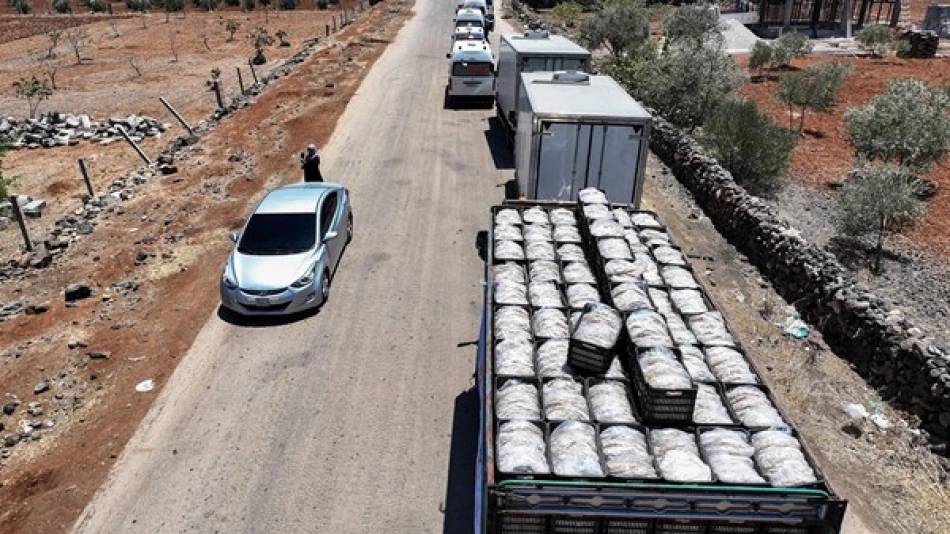
Escalating Tensions in Sweida Following Recent Clashes
Syria's As-Suwayda Receives First Humanitarian Aid After Deadly Week Claims Over 1,000 Lives
A humanitarian convoy entered the Syrian city of As-Suwayda on Sunday, marking the first aid delivery since violence erupted a week ago, killing more than 1,000 people and displacing 128,000 residents. The aid arrival follows a government-declared ceasefire that has brought tentative calm to the southern province, highlighting both the severity of the crisis and Damascus's struggle to maintain control over restive regions.
Ceasefire Brings Temporary Respite
The city has experienced relative calm since Sunday morning, following the Syrian presidency's announcement of a ceasefire. Under the agreement, internal security forces have deployed across parts of the province while tribal fighters—who had been engaged in clashes with local groups—have withdrawn from contested areas.
The convoy, consisting of dozens of trucks and ambulances bearing Syrian Red Crescent insignia, was spotted on the outskirts of As-Suwayda before entering the city. Omar al-Maliki, Director of Media and Communications for the Syrian Red Crescent, confirmed this was "the first convoy to enter after the recent events" and emphasized it would not be the last.
Critical Supplies Address Humanitarian Crisis
The aid shipment includes food baskets, medical supplies, flour, fuel, and body bags—a grim reminder of the conflict's human toll. The inclusion of body bags underscores the scale of casualties and the urgent need for proper handling of the deceased in a region where infrastructure has been severely strained.
According to the Syrian Observatory for Human Rights, the violence that began on July 13 has claimed 1,017 lives within just one week, making it one of the deadliest episodes in the province in recent years.
Government Response Reveals Broader Challenges
Syrian authorities announced plans for additional aid, preparing a convoy of more than 40 trucks accompanied by three government ministers. As-Suwayda Governor Mustafa Bakour stated the mission aimed to address "acute shortages in medical and relief supplies."
This high-level government involvement suggests Damascus recognizes the severity of the situation in As-Suwayda, a province that has historically maintained a complex relationship with central authority. The Druze-majority region has often operated with relative autonomy, and the recent violence may represent a significant challenge to this delicate balance.
Displacement Crisis Compounds Regional Instability
The International Organization for Migration reports that over 128,000 people have been forced to flee their homes—a massive displacement for a province with a total population of approximately 370,000. This represents more than one-third of the province's residents, indicating the conflict's widespread impact beyond the immediate casualty figures.
The scale of displacement puts additional pressure on neighboring areas and stretches Syria's already limited resources. For a country still recovering from over a decade of civil war, managing such a large internal refugee crisis presents significant logistical and economic challenges.
Strategic Implications for Syrian Stability
As-Suwayda's location near the Jordanian border makes stability in the province crucial for regional security. The area serves as a buffer zone and has been relatively insulated from the broader Syrian conflict. The recent violence suggests that even previously stable regions remain vulnerable to sudden escalation.
The involvement of tribal fighters in the conflict indicates the complex local dynamics at play, where traditional power structures intersect with broader political tensions. The government's ability to negotiate their withdrawal while deploying security forces demonstrates both the fragility of local arrangements and Damascus's continued capacity to project authority when necessary.
Most Viewed News

 Layla Al Mansoori
Layla Al Mansoori






